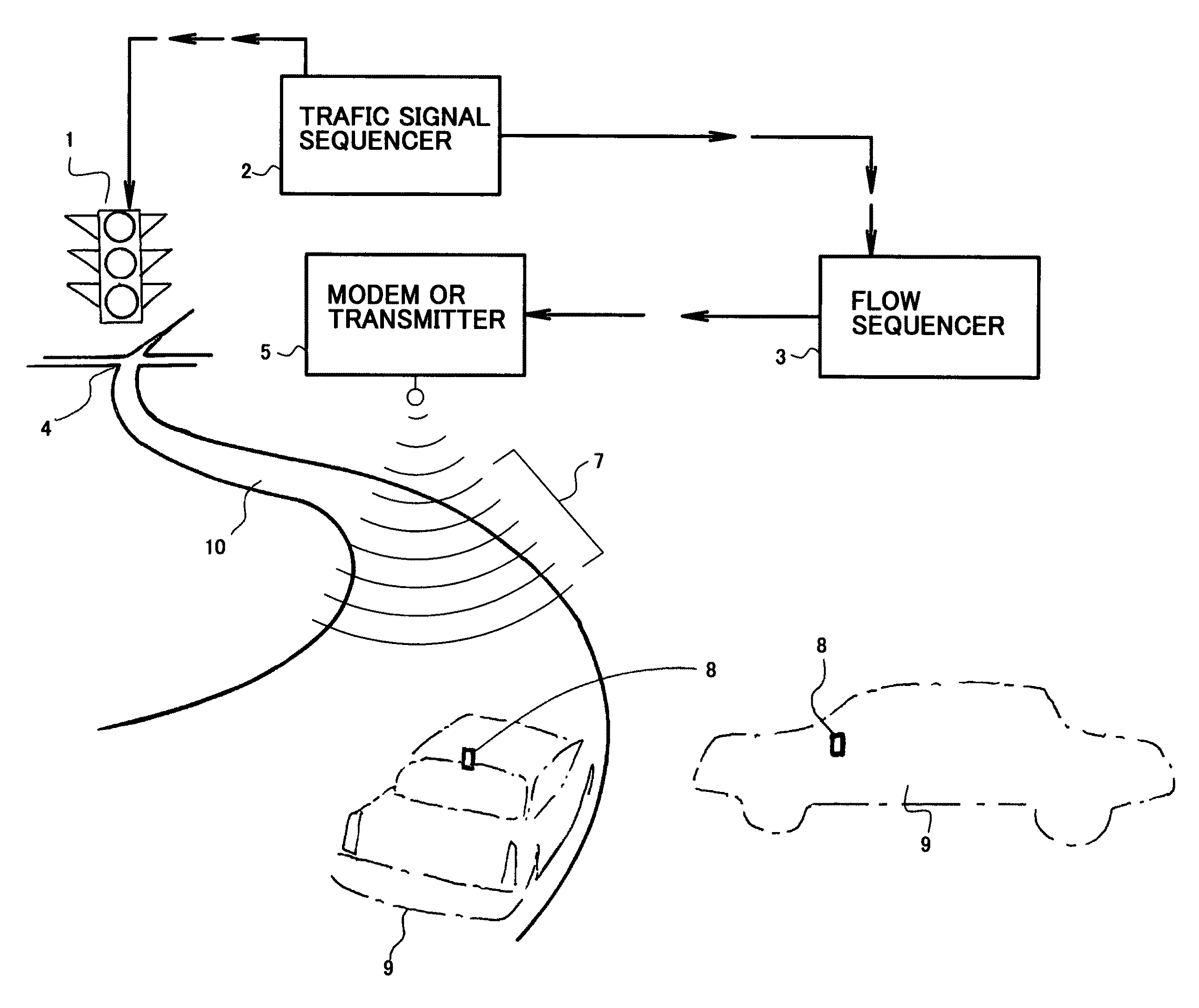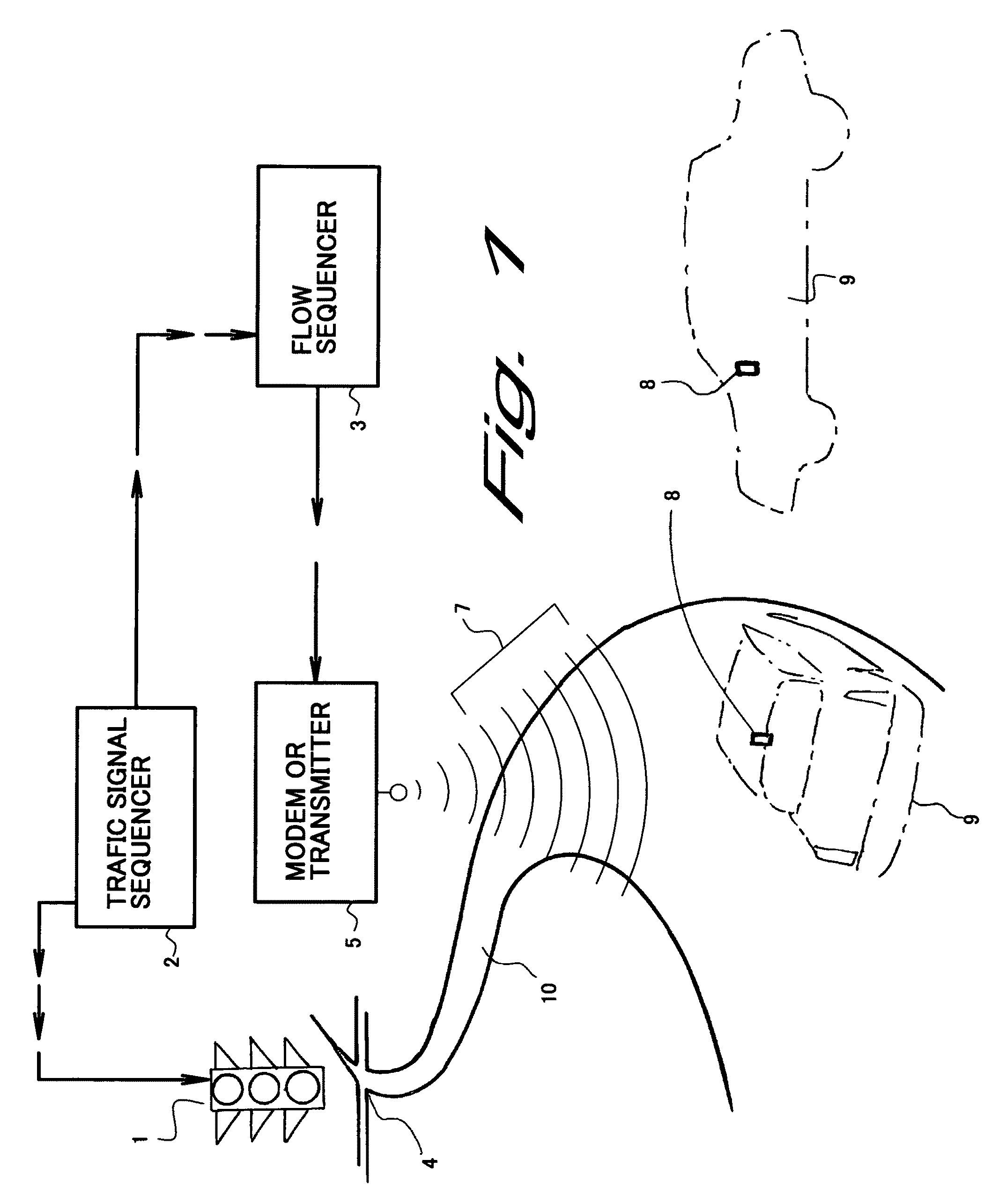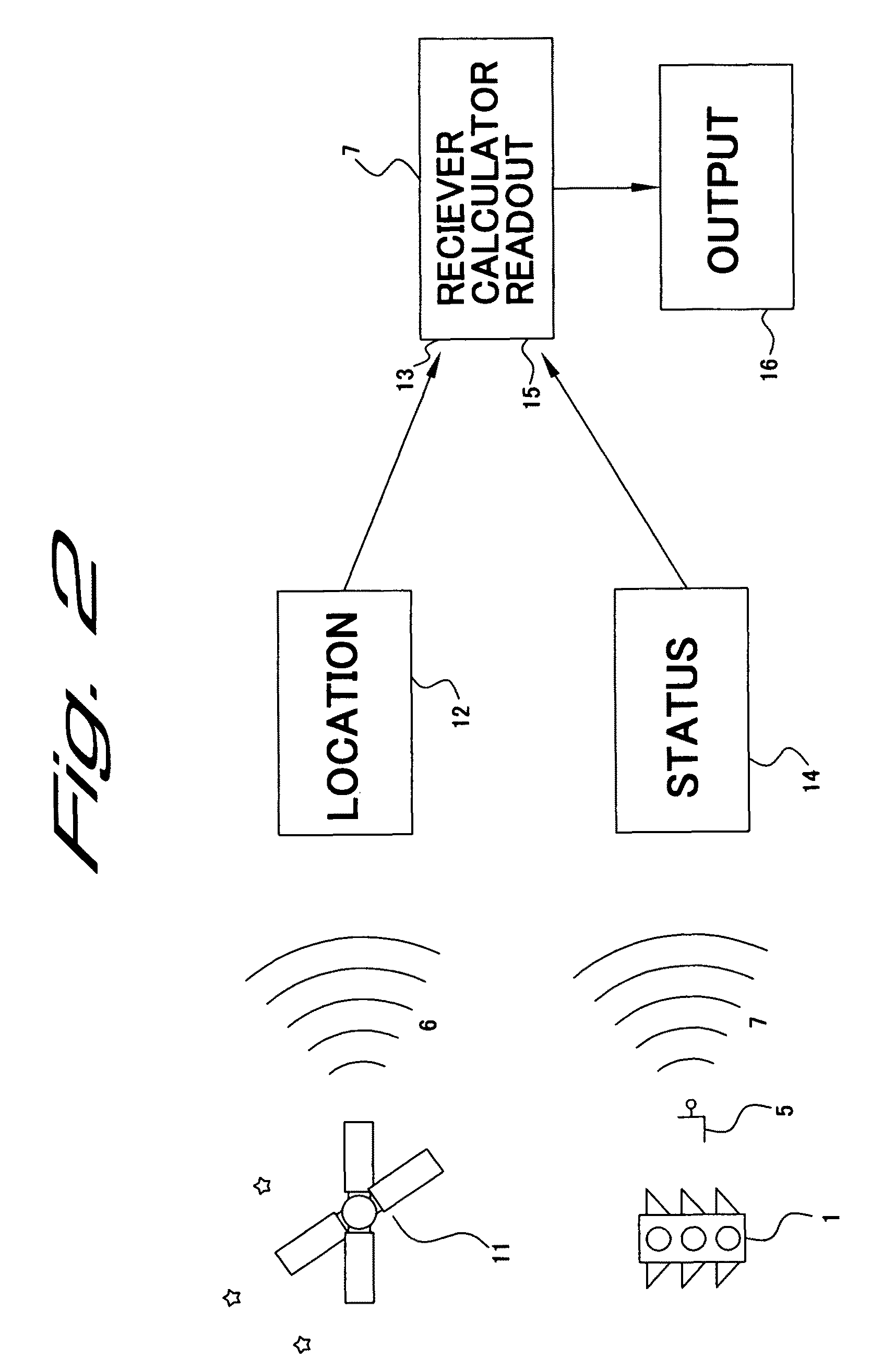Mobile FLOW readout and mobile FLOW sequencer features
a technology of flow sequencer and readout, which is applied in the direction of road vehicle traffic control, control of traffic signals, instruments, etc., can solve the problems of bound outputs to be read, method is of risk to safety, and typical motorists will not be able to interpret these kinds of outputs
- Summary
- Abstract
- Description
- Claims
- Application Information
AI Technical Summary
Benefits of technology
Problems solved by technology
Method used
Image
Examples
embodiment # 2
Alternate Embodiment #2
[0136]Location 12 and status 14 (in [FIG. 25]) can be entered in streaming form (as opposed to events) into location memory buffer 112, and status memory Buffer 113 respectively. The buffers are funneled into stow of location and status 114 through location port 13 and status port 15 respectively, and a scan is initiated 68, and an output 69 is posted and the process is started over again.
embodiment # 3
Alternate Embodiment #3
[0137]Receiver / Calculator / Readout RCR unit can be part of a larger device in [FIG. 26] such as a small computer, map readout or the like 115. Screen 116 (LCD, CRT or the like) caries sprites, art files, fields, animation cells, or the like which include graphical position indicator 101 within FLOW pattern graphic 100, upward, downward arrows 108, 109 respectively, equal sign 106, speed assignment 95, actual speed (for interactive readout) 96. Processes such as location sentences 65 (in [FIG. 10]), status time data packet 7 (in [FIGS. 1 and 9]), inertial renewed location virtual processor 89 (in [FIG. 15]) are processed along with functionality of the device 115.
PUM
 Login to View More
Login to View More Abstract
Description
Claims
Application Information
 Login to View More
Login to View More - R&D
- Intellectual Property
- Life Sciences
- Materials
- Tech Scout
- Unparalleled Data Quality
- Higher Quality Content
- 60% Fewer Hallucinations
Browse by: Latest US Patents, China's latest patents, Technical Efficacy Thesaurus, Application Domain, Technology Topic, Popular Technical Reports.
© 2025 PatSnap. All rights reserved.Legal|Privacy policy|Modern Slavery Act Transparency Statement|Sitemap|About US| Contact US: help@patsnap.com



